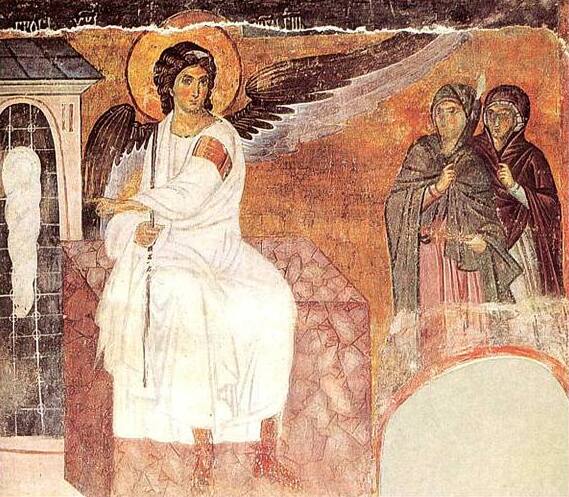|
≈Ýovinistiƒçka Farsa
≈Ýovinistiƒçka farsa (), ''Chauvinistic Farce'' in English is a theatre play, written by Radoslav Pavloviƒá that performed across former Yugoslavia prior to and during its dissolution. A total of 4 sequels of the play were produced from 1985 to 1998, and according to one of the main actors, Predrag Ejdus, the play was performed more than 1800 times, and was performed in almost every city in former Yugoslavia that had a decent theatre. Thanks to its great popularity with the audience, the play launched the carriers of then young and later famous, main actors Josif Tatiƒá and Predrag Ejdus. The play is mostly set as a dialog between a stereotypical Serb, Slobodan Mihajlovic (played by Tatiƒá) and a stereotypical Croat, Bernard Drah (played by Ejdus), both of whom drink heavily. The script derives its capacity to make the audience laugh from the everlasting differences between Serbs and Croats, and the destiny of two people historically, culturally and geographically bound to one an ... [...More Info...] [...Related Items...] OR: [Wikipedia] [Google] [Baidu] |
Radoslav Pavlović
Radoslav (Lale) Pavloviƒá (; born 8 September 1954, in Aleksandrovac, Serbia) is a Serbs, Serbian writer. Pavlovic authored numerous theatre plays and film/TV scripts popular with the audience and acclaimed by the critics. He is best known for his theatre plays ≈Ýovinistiƒçka farsa, performed more than a thousand times across Yugoslavia, ex-Yugoslavia, ''Mala'', and ''Moja Draga'' performed for hundreds of times in Belgrade theaters, as well as movies Balkan Rules (1997), Living like the rest of us (1983), Hajde da se volimo 3 (1990) featuring ex-Yugoslavia mega-star Lepa Brena, and TV series Moj Rodjak sa Sela (2008) scoring record viewership of over 3 million viewers per episode. From 2012 to 2017 Pavloviƒá served as advisor for Culture to the President of Serbia, Tomislav Nikoliƒá. In the context of his political role, Pavloviƒá was working on causes related to Serbia's historical heritage and raising awareness of it within public, such as the life and work of Alexander I of ... [...More Info...] [...Related Items...] OR: [Wikipedia] [Google] [Baidu] |
Kruševac
Kruševac ( sr-Cyrl, Крушевац, ) is a list of cities in Serbia, city and the administrative center of the Rasina District in central Serbia. It is located in the valley of West Morava, on Rasina (river), Rasina river. According to the 2022 census, the city administrative area has a population of 113,582 while the urban area has 53,746 inhabitants. The city was founded in 1371, by Prince Lazar of Serbia (1371–1389), who used it as his seat. Etymology The etymology is derived from the Serbian word for "river stone", ''krušac'' which was largely used for a building at that time. History Kruševac was founded in 1371, as a fortified town in the possession of Lazar of Serbia, Lord Lazar Hrebeljanović. The Lazarica (church), Lazarica Church (or ''Church of St, Stephen'') was built by Lazar between 1375 and 1378, in the Morava school, Morava architectural style. It is mentioned in one of Lazar's edicts in 1387, as his seat, when he affirmed the rights of Republic of Venice, ... [...More Info...] [...Related Items...] OR: [Wikipedia] [Google] [Baidu] |
Serbian Plays
Serbian may refer to: * Pertaining to Serbia in Southeast Europe; in particular **Serbs, a South Slavic ethnic group native to the Balkans ** Serbian language ** Serbian culture **Demographics of Serbia, includes other ethnic groups within the country *Pertaining to other places **Serbia (other) **Sorbia (other) *Gabe Serbian (1977–2022), American musician See also * * * Sorbs * Old Serbian (other) Old Serbian may refer to: * someone or something related to the Old Serbia, a historical region * Old Serbian language, a general term for the pre-modern variants of Serbian language, including: ** the Serbian recension of Old Church Slavonic la ... {{Disambiguation Language and nationality disambiguation pages ... [...More Info...] [...Related Items...] OR: [Wikipedia] [Google] [Baidu] |
Culture Of Serbia
Serbian culture is a term that encompasses the Serbian art, artistic, Serbian cuisine, culinary, Serbian literature, literary, Music of Serbia, musical, Politics of Serbia, political and Serb traditions, social elements that are representative of Serbs and Serbia. History The Byzantine Empire had a great influence on Serbian culture as it initially governed the Byzantine and Frankish Empire, Frankish frontiers in the name of the emperors. Serbs soon formed an Principality of Serbia (early medieval), independent country. They were baptised by Eastern Orthodox missionaries and adopted the Cyrillic script, with both Latin and Catholic influences in the southern regions. The Republic of Venice influenced the maritime regions of the Serbian state in the Middle Ages. The Serbian Orthodox Church gained autocephaly from Constantinople in 1219. The pope declared Stefan the First Crowned king, starting a prosperous Serbia in the Middle Ages, medieval period of Serbian culture. The ... [...More Info...] [...Related Items...] OR: [Wikipedia] [Google] [Baidu] |
Arts In Serbia
Serbian art refers to the visual arts of the Serbs and their nation-state Serbia. The medieval heritage includes Byzantine art, preserved in architecture, frescos and icons of the many Serbian Orthodox monasteries. In the early modern period, Serbian visual arts began to be influenced by Western art, culminating in the Habsburg monarchy in the late 18th century. The beginning of modern Serbian art is placed in the 19th century. Many Serbian monuments and works of art have been lost forever due to various wars and peacetime marginalizations. Prehistory Currently, Europe's oldest known civilization was discovered in Serbia, namely Lepenski Vir and Vinča culture. In Serbia, Archaeological Sites of Exceptional Importance (Serbia) are numerous and have the highest level of state protection under the Law on Cultural Heritage. See: Prehistoric sites in Serbia and Prehistory of Southeastern Europe for artifacts and sculpture found at the archeological sites of Lepenski Vir. Roman peri ... [...More Info...] [...Related Items...] OR: [Wikipedia] [Google] [Baidu] |

